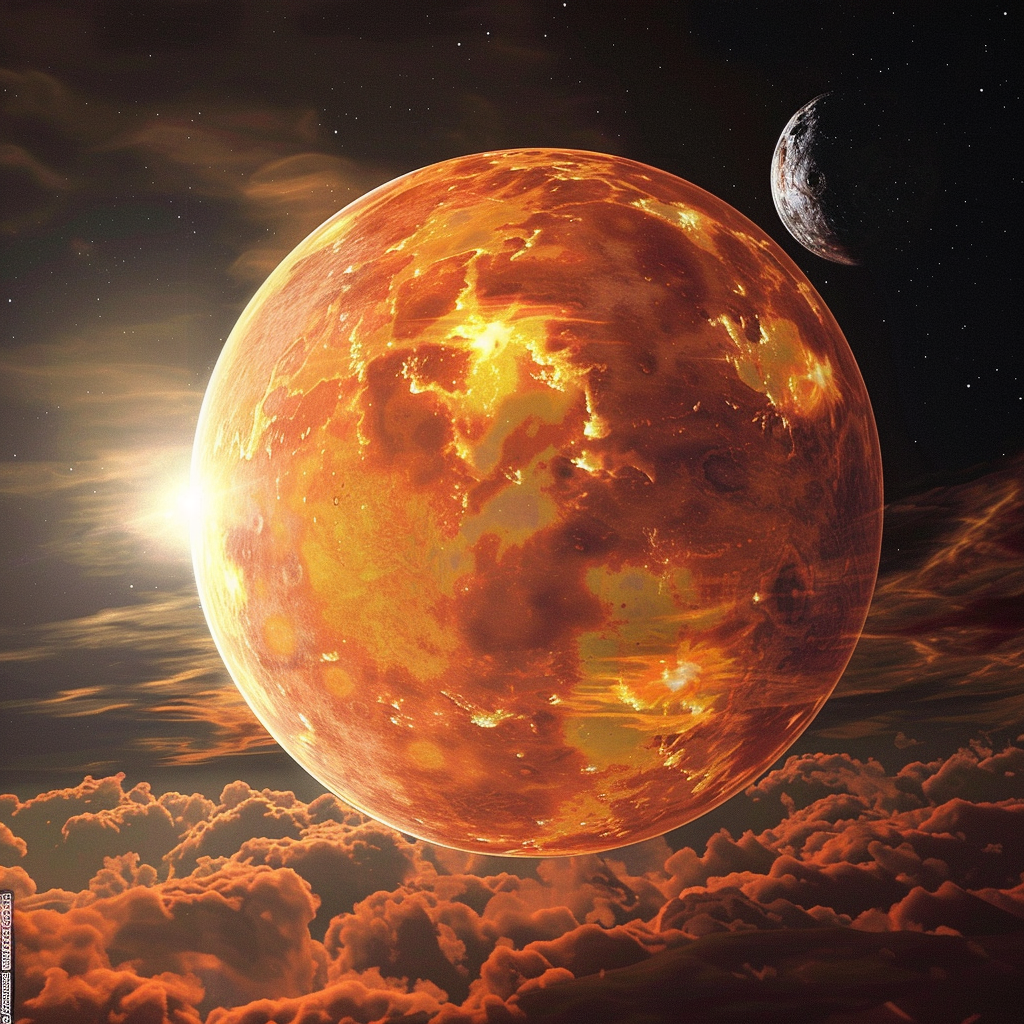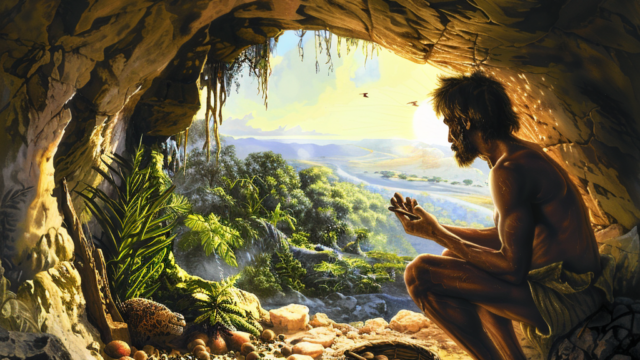
Astronomers Find Super-hot ‘Super-Earth’ (voanews.com)
Astronomers Find Super-hot ‘Super-Earth’
Astronomers have searched for years for rocky planets outside our solar system. They have finally found one with an atmosphere.
Scientists believe that a rocky planet with an atmosphere is key to sustaining life. But the planet that astronomers found offers no hope for life. Its surface is made up of molten rock.
Researchers recently called the planet a “super-Earth.” It is a rocky world much larger than our planet but smaller than the gas giant in our solar system, Neptune.
The planet orbits extremely close to its star. The star is less bright and smaller than our own.
Observations using two devices aboard the James Webb Space Telescope suggest there is an atmosphere. But the atmosphere may not be able to support life. It could be continuously filled up by gases that large areas of molten rock release.
Renyu Hu is a planetary scientist with NASA’s Jet Propulsion Laboratory and California Institute of Technology. He was the lead writer of the study, which appeared recently in the publication Nature.
Hu said, “The atmosphere is likely rich in carbon dioxide or carbon monoxide, but can also have other gases such as water vapor and sulfur dioxide.” He added that current observations cannot tell what the exact atmospheric makeup is.
The Webb data also did not make clear the thickness of the atmosphere. Hu said it could be as thick as Earth’s or even thicker than that of Venus. Venus has a toxic atmosphere that is the densest in our solar system.
The planet is called 55 Cancri e. Scientists also call it Janssen. It is about 8.8 times more massive than Earth and about two times as wide.
It orbits its star at one-25th the distance between our solar system’s innermost planet Mercury and the sun. As a result, its surface temperature is about 1,725 degrees Celsius.
One side of the planet probably always faces its star. Four other planets, all gas giants, are known to orbit the same star. The planet is found in our Milky Way galaxy, about 41 light-years from Earth. A light-year is the distance light travels in a year, or 9.5 trillion kilometers.
The planet’s star is gravitationally tied to another star in the system. Having two stars in the same system is called a binary system.
The other star is a red dwarf, the smallest kind of an ordinary star. The distance between these two stars is 1,000 times the distance between Earth and the sun. Light from one star takes six days to reach the other star.
Although the rocky planet does appear to have an atmosphere, scientists say it probably should not even have one. Being so close to its star, any atmosphere should be taken away by the effects of the star.
But gases dissolved in the planet’s large ocean of molten rock may continue to fill up the atmosphere, Hu said.
“The planet cannot be habitable,” Hu added. That is because it is too hot to have liquid water, which is also considered necessary for life.
Scientists have found other planets with an atmosphere outside our solar system. But they have all been gaseous planets, not rocky ones.
As the James Webb telescope pushes the limits of space exploration, the discovery of a rocky planet with an atmosphere is a sign of progress.
On Earth, the atmosphere warms the planet. It contains the oxygen people breathe and protects against the effects of the sun. It also creates the pressure needed for liquid water to remain on the planet’s surface.
Brice-Olivier Demory is a scientist at Switzerland’s University of Bern’s Center for Space and Habitability. He helped write the new study. He said, “On Earth, atmosphere is key for life.” He added that the findings create hope that the Webb telescope may one day find cooler planets that could support liquid water on their surface.
“But,” he said, “we are not there yet.”
I’m Gregory Stachel.
【日本語訳】
天文学者が超高温の「スーパーアース」を発見
天文学者は長年、太陽系外の岩石惑星を探索してきました。そして、ついに大気を持つ岩石惑星を発見したのです。
科学者たちは、生命を維持するためには大気を持つ岩石惑星が鍵となると考えています。しかし、天文学者が発見した惑星には生命の希望はありません。その表面は溶けた岩でできているのです。
研究者たちは最近、その惑星を「スーパーアース」と呼びました。それは私たちの惑星よりずっと大きいが、太陽系のガス巨星である海王星よりは小さい岩石の世界です。
その惑星は、恒星のごく近くを周回しています。その恒星は、私たちの太陽よりも暗く小さいのです。
ジェームズ・ウェッブ宇宙望遠鏡に搭載された2つの機器を使った観測から、大気の存在が示唆されています。しかし、その大気は生命を支えることができないかもしれません。溶岩の大部分が放出するガスによって継続的に満たされている可能性があるのです。
レニュ・フーは、NASAのジェット推進研究所とカリフォルニア工科大学の惑星科学者です。彼は最近、Nature誌に掲載された研究の主執筆者でした。
フー氏は、「大気は二酸化炭素や一酸化炭素に富んでいる可能性が高いですが、水蒸気や二酸化硫黄などの他のガスも含まれている可能性があります」と述べました。また、「現在の観測では、正確な大気組成は特定できません」と付け加えました。
ウェッブのデータでは、大気の厚さも明らかになりませんでした。フー氏によると、それは地球の大気と同じくらいの厚さか、金星の大気よりも厚い可能性があるということです。金星は、太陽系で最も密度の高い有毒な大気を持っています。
この惑星は55 Cancri eと呼ばれています。ヤンセンとも呼ばれています。地球の約8.8倍の質量があり、幅は約2倍です。
太陽系で最も内側を周回する惑星である水星と太陽との距離の25分の1の距離で、恒星を周回しています。その結果、表面温度は約1,725℃にもなります。
惑星の片側は恒星に常に面している可能性が高いです。他の4つの惑星はすべてガス巨星で、同じ恒星を周回していることが知られています。この惑星は、地球から約41光年離れた天の川銀河内に存在します。1光年は光が1年かけて進む距離、つまり9.5兆kmのことです。
その惑星の恒星は、同じ系に存在する別の恒星と重力的に結びついています。同じ系に2つの恒星があることを連星系と呼びます。
もう一方の恒星は、通常の恒星の中で最も小さい種類である赤色矮星です。これら2つの恒星の距離は、地球と太陽の距離の1,000倍です。一方の恒星からの光が、もう一方の恒星に到達するのに6日かかります。
岩石惑星は大気を持っているように見えますが、科学者たちは本来、大気を持つべきではないと言います。恒星にとても近いため、大気は恒星の影響で奪われるはずだからです。
しかし、惑星の大規模な溶岩の海に溶け込んだガスが、大気を継続的に満たしている可能性がある、とフー氏は述べました。
「この惑星は生命を宿すことはできません」とフー氏は付け加えました。生命に必要不可欠とされる液体の水を持つには、あまりにも高温だからです。
科学者たちは、太陽系外で大気を持つ他の惑星を発見しています。しかし、それらはすべてガス惑星であり、岩石惑星ではありませんでした。
ジェームズ・ウェッブ望遠鏡が宇宙探査の限界に挑戦する中で、大気を持つ岩石惑星の発見は進歩の証しです。
地球上では、大気が惑星を温めています。大気には人々が呼吸する酸素が含まれ、太陽の影響から保護しています。また、液体の水が惑星の表面に留まるために必要な圧力を生み出しているのです。
ブライス-オリビエ・デモリーは、スイスのベルン大学宇宙居住性センターの科学者です。彼は今回の新しい研究の執筆に携わりました。彼は、「地球上では、大気が生命の鍵となっています」と述べました。また、今回の発見は、ウェッブ望遠鏡がいつかより冷たい惑星を発見し、表面に液体の水を支えることができるという希望を生み出すものだと付け加えました。
「しかし、」彼は言いました。「私たちはまだそこまで到達していないのです。」
単語・熟語チェック
・solar system 太陽系
・molten 溶けた
・vapor 蒸気、水蒸気
・giant 巨大な
・galaxy 銀河
・habitable 人が住める、生息可能な
・orbit 周回する、軌道
・massive 大規模な、巨大な
・toxic 有毒な
・gravitationally 重力的に
・binary system 連星系
・evolve 進化する
・hemisphere 半球
・molecular 分子の
単語解説
・molten
⇒溶けた状態を表す形容詞。「molten rock(溶岩)」のように、高温で液体状になった物質を指す。動詞のmelt(溶ける)の過去分詞。名詞形はmoltenness。
・vapor
⇒気体、特に水蒸気を意味する名詞。液体が熱せられて発生する気体を指す。形容詞のvaporousは「蒸気状の」という意味。動詞のvaporizeは「気化させる、蒸発させる」という意味。
・habitable
⇒住むのに適した、生息可能なという意味の形容詞。「habitable planet(居住可能な惑星)」などと使う。habitは「住む」という動詞、habitatは「生息地、住処」という名詞で、いずれもラテン語のhabitāre(住む)が語源です。
・orbit
⇒「軌道」を意味する名詞で、天体が他の天体の周りを回る経路のこと。動詞としても「〜の周りを回る」という意味で使われます。「The Earth orbits the Sun.(地球は太陽の周りを公転している)」など。
・massive
⇒「大規模な、巨大な」という意味の形容詞。質量が大きいことを表すmassに由来しています。「a massive star(巨大な恒星)」など。
・toxic
⇒「有毒な」という意味の形容詞。toxicityは「毒性」を表す名詞。ギリシャ語のtoxikonに由来し、これは「毒を塗った矢」を意味していました。
・gravitationally
⇒「重力的に」という意味の副詞。gravityは「重力」を表す名詞で、gravitationalは「重力の」という形容詞。
・binary system
⇒「連星系」を意味する名詞。2つの恒星が互いの重力で結びついて運動している恒星系のこと。binaryは「2つの」という意味の形容詞。
・evolve
⇒「進化する」という意味の動詞。名詞形はevolution。ラテン語のēvolvere(展開する)が語源で、時間の経過とともに変化することを表します。
・hemisphere
⇒「半球」を意味する名詞。地球を2つに分けた半分の部分のこと。hemiは「半分」、sphereは「球体」を表します。
・molecular
⇒「分子の」という意味の形容詞。「molecular biology(分子生物学)」など。名詞のmoleculeは「分子」を意味します。
原ちゃんチェック
55 Cancri e(かに座55番星e)は地球から約40光年離れた太陽に似た恒星を公転する太陽系外惑星です。この惑星は以下のような特徴を持っています。
・直径は地球の約2倍、質量は8倍の岩石型のスーパーアース
・主星のすぐ近くを約18時間で公転するため表面温度は2000度以上に達し、溶岩に覆われている可能性がある
・内部には高温高圧によりダイヤモンドが存在すると推測されることから「ダイヤモンド惑星」とも呼ばれる
・大気にはシアン化水素などの毒性ガスが含まれ、生命の存在には適さないと考えられている
・主星に非常に近いため、将来的には潮汐力で破壊される運命にあるかもしれない
このように、かに座55番星eは太陽系内には存在しない極端な環境の岩石惑星であり、系外惑星の多様性を示す興味深い例と言えます。今後の観測により、その性質がさらに明らかになることが期待されています。





